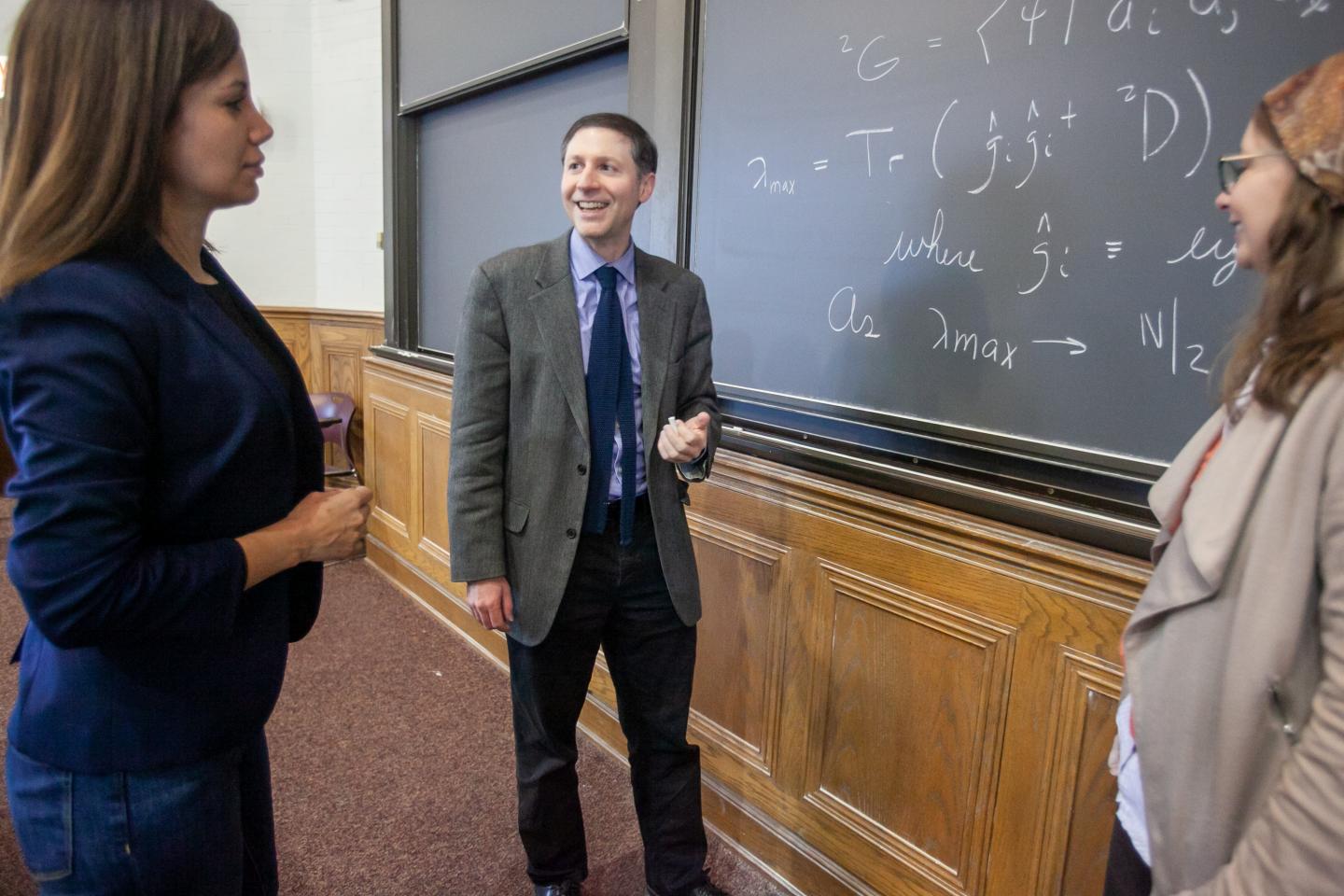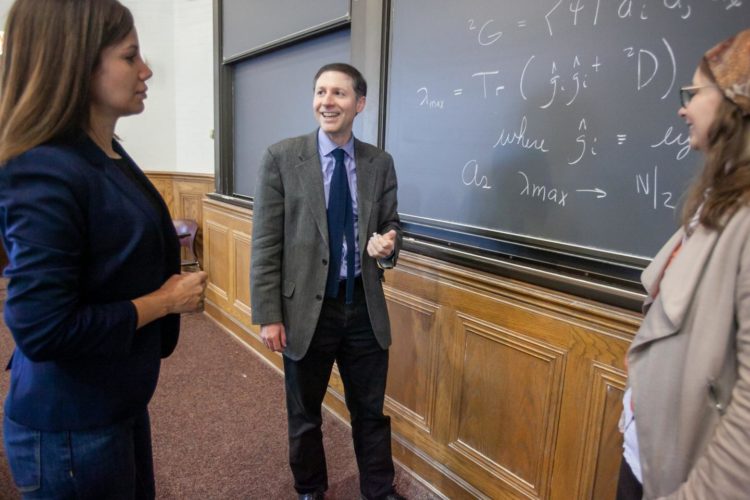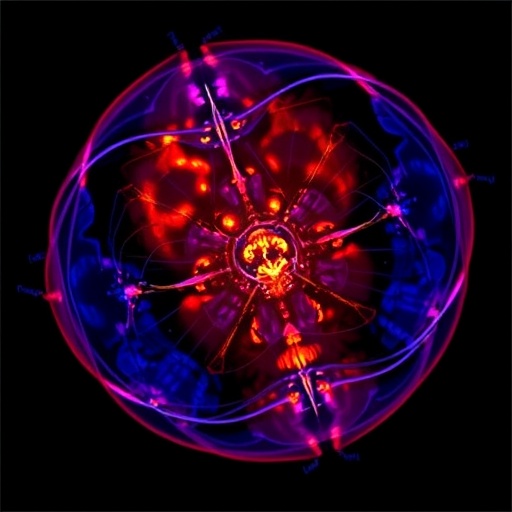UChicago study addresses problem of generating and moving energy efficiently

Credit: University of Chicago
Three scientists from the University of Chicago have run the numbers, and they believe there may be a way to make a material that could conduct both electricity and energy with 100% efficiency–never losing any to heat or friction.
The breakthrough, published Feb. 18 in Physical Review B, suggests a framework for an entirely new type of matter, which could have very useful technological applications in the real world. Though the prediction is based on theory, efforts are underway to test it experimentally.
“We started out trying to answer a really basic question, to see if it was even possible–we thought these two properties might be incompatible in one material,” said co-author and research adviser David Mazziotti, a professor of Chemistry and the James Franck Institute and an expert in molecular electronic structure. “But to our surprise, we found the two states actually become entangled at a quantum level, and so reinforce each other.”
Since an untold amount of energy is lost off power lines, engines and machinery every year, scientists are eager to find more efficient alternatives. “In many ways, this is the most important question of the 21st century–how to generate and move energy with minimal loss,” Mazziotti said.
We’ve known about superconductors–a kind of material that can conduct electricity forever with nearly zero loss–for more than a century. But it was only in the last few years that scientists managed to make a similar material in the laboratory which can conduct energy with nearly zero loss, called an exciton condensate.
But both superconductors and exciton condensates are tricky materials to make and to keep functioning–partly because scientists don’t fully understand how they work and the theory behind them is incomplete. We do know, however, that both involve the action of quantum physics.
UChicago graduate student LeeAnn Sager began to wonder how the two states could be generated in the same material. Mazziotti’s group specializes in exploring the properties and structures of materials and chemicals using computation, so she began plugging different combinations into a computer model. “We scanned through many possibilities, and then to our surprise, found a region where both states could exist together,” she said.
It appears that in the right configuration, the two states actually become entangled–a quantum phenomenon in which systems become intangibly linked together. This challenges the conventional notion that the two states are unrelated, and may open a new field of dual exciton and fermion pair condensates.
Using some advanced mathematics, they showed that thanks to the quantum entanglement, the dual condensates should theoretically exist even at the macroscopic size–that is, visible to the human eye.
“This implies that such condensates may be realizable in novel materials, such as a double layer of superconductors,” Sager said.
The scientists are working with experimental groups to see if the prediction can be achieved in real materials.
“Being able to combine superconductivity and exciton condensates would be amazing for lots of applications–electronics, spintronics, quantum computing,” said Shiva Safaei, a postdoctoral researcher and the third author on the paper. “Though this is a first step, it looks extremely promising.”
###
Media Contact
Louise Lerner
[email protected]
773-702-8366
Related Journal Article
http://dx.




